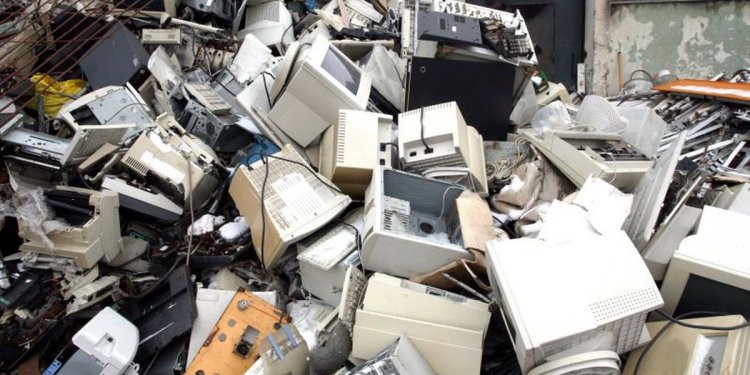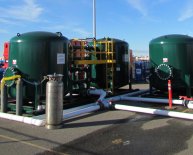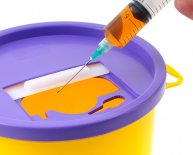
Health Hazard Due to Toxic Waste Disposal
![]() Toxic waste presents a serious human health threat. According to the U.S. Environmental Protection Agency (EPA), the United Stated generated nearly 40 million tons of hazardous waste in 2007. The primary source was basic chemical manufacturing. Yet toxic waste also exists in the home. Items such as single-use batteries, household cleaners and electronics all contain hazardous materials. Proper disposal can help prevent health hazards. However, even if these materials are disposed of properly, there are still both human health and environmental risks.
Toxic waste presents a serious human health threat. According to the U.S. Environmental Protection Agency (EPA), the United Stated generated nearly 40 million tons of hazardous waste in 2007. The primary source was basic chemical manufacturing. Yet toxic waste also exists in the home. Items such as single-use batteries, household cleaners and electronics all contain hazardous materials. Proper disposal can help prevent health hazards. However, even if these materials are disposed of properly, there are still both human health and environmental risks.
Electronic waste, or e-waste, accounted for over 2 million tons of hazardous waste in 2007, estimates the EPA, yet only 18 percent was actually recycled; the majority ended up in landfills. E-waste contains several highly toxic ingredients including lead, cadmium and mercury. In landfills, these toxins can leach into soils and possibly contaminate groundwater. Cadmium exposure, for example, can cause kidney damage and cancer in humans. Lead exposure in children can cause brain damage.
While not regulated by the EPA, disposal of household hazardous waste in the trash is potentially harmful. Compact fluorescent bulbs (CFLs) contain small quantities of mercury. The EPA recommends that you place broken bulbs in a plastic bag or sealed container for disposal. If disposed of improperly, mercury vapor can enter the air. Mercury poses the greatest risk to unborn children, causing neurological damage.
Even if toxic waste is disposed of correctly, it can still cause health hazards. One common method of treating toxic waste is incineration. Incineration can release contaminants into the air such as dioxins. Dioxins are by-products of herbicide production. Long-term exposure to these poisonous chemicals can cause nervous system disorders. Even short-term exposure carries risks including skin lesions and impaired liver function, according to the World Health Organization.
Some toxic waste, such as mercury and lead, pose additional human and environmental health hazards. Both of these toxins can accumulate in human and animal tissue. Continued exposure increases their toxicity. In the environment, these effects can travel throughout the entire food chain.
One way to mitigate the health effects of toxic waste disposal is to recycle these materials. Recycling keeps these waste products from landfills and reduces the risk of environmental impacts. State regulations may prevent you from placing toxic waste in the household trash. However, you may be able to locate a recycling center in your area. Earth911.com provides a handy search to help you find a place to dispose of your toxic waste.
















